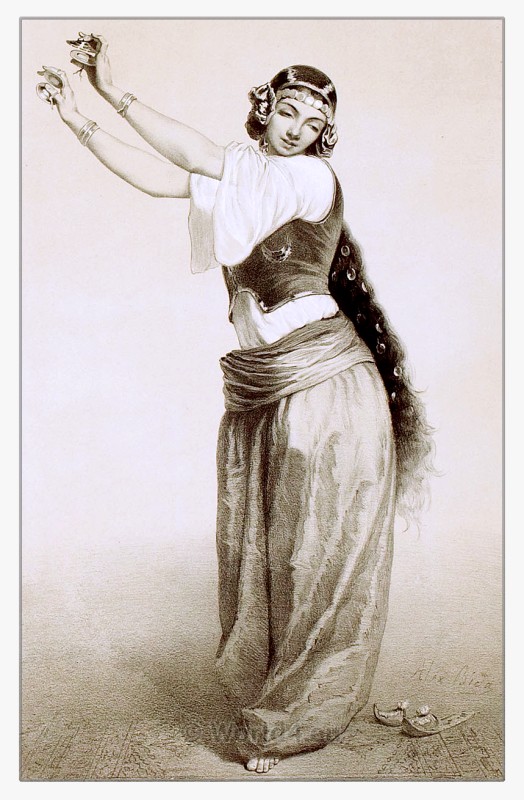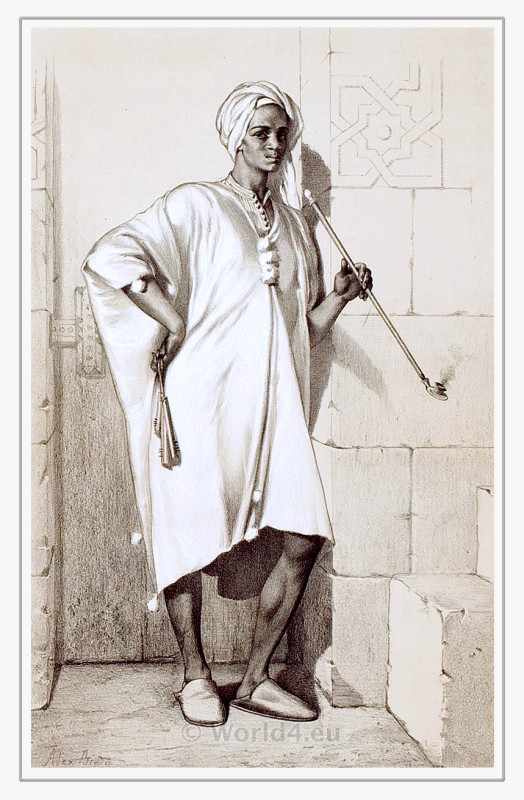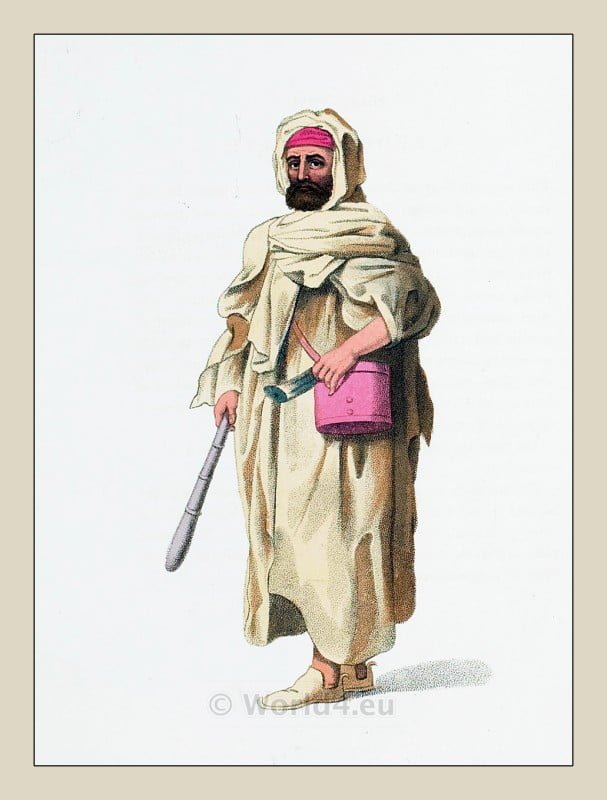Almeh was the name of a class of courtesans or female entertainers in Arab Egypt. The term became synonymous with ‘belly dancer’ in 19th-century European Orientalism.
Category: Egypt
Traditional Egyptian costumes. Arabian women`s and men`s clothing from the middle east. Ottoman Empire Period dresses.
A Nubian from Egypt smokes a pipe in 1850.
Egypt. Nubian in traditional dress from 1850 smokes a pipe. In the army and in police service, the Nubians played a major role at all times.
Traditional Arabian Women from Cairo. Ottoman Empire.
AN EGYPTIAN ARAB. Arabian Women from Cairo. Ottoman Empire.
A Bedouin Arab in the vicinity of Alexandria. Ottoman Empire.
THIS singular body of Arabs never inhabit any town, but constantly live under tents.



